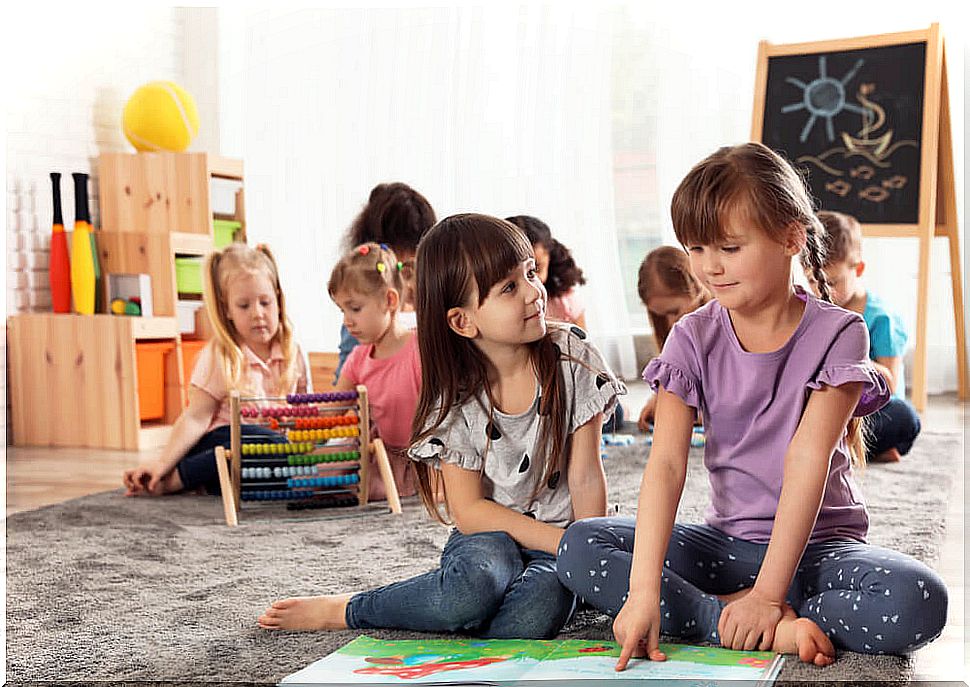How To Instill A Growth Mindset In Students

Children have two ways of thinking. This is clearly differentiated in many pedagogical theories. We have the fixed mindset and the growth mindset. They are easily distinguishable.
Someone who has a fixed mindset thinks that their abilities are innate and that they cannot change. A person with this mentality will try to avoid any kind of risk and, if there are any problems that they have to deal with, they become discouraged. For someone with a fixed mindset, challenges are undesirable.
On the other hand, someone with a growth mindset believes that they are capable of learning and that they can improve their abilities. Challenges are great opportunities to grow, mistakes serve to learn and face problems. You firmly believe that you can get what you want if you put in the time and effort. Look for your goals and work for them.
The growth mindset is uncharted territory in many educational settings. Understanding it and looking for it in students effectively is one of the great priorities of teaching today.
The relatively new pedagogy focuses on helping students understand the values of effort, persistence, and seeking to try new learning methods to enhance their talents and abilities. We are going to look at some concrete ways to instill a growth mindset in students.

Avoid praising intelligence and effort
Praising intelligence and effort rather than recognizing the importance of planning and testing new approaches will put us at risk of discouraging growth. The importance of language must be taken into account.
Praise and feedback can change the way students view learning processes. Therefore, whether you are creating a growth mindset or not will depend on your focus.
Also, while effort is tied to a growth mindset, praising it explicitly can backfire. It is advisable to look for different learning strategies.
We are going to see examples of possible strategies with specific comments applicable in this regard:
- Wrong (fixed mindset): you’ve done everything you can. Do not worry.
- Recommended (growth mindset): Don’t worry if you don’t understand something right away. Focus on your next steps. What do you think they should be?
- Wrong (fixed mindset): Good job! You are very smart!
- Recommended (growth mindset): Good job! The curriculum that you have created and followed has helped you a lot. You should create another one for the next exam.
Uses various teaching strategies seeking a growth mindset
So we can use different teaching tactics and principles to differentiate the content we are presenting to students. In this way, we will change the way they process content and their knowledge.
Students must create a whole range of new skills that help them to approach the different new learning obstacles.
- Content: when applicable, we will use videos, audio clips , presentations and blocks in the content presentation.
- Processes: we will give students the opportunity to work individually but also in pairs, small groups and large groups.
- Products: We will let the students demonstrate that they have assimilated the content with different forms of grades. In exams, projects and assignments: essays, presentations or artistic productions.

Introduce Simple Gamification Elements
Certain aspects of gamification (applying game elements in the classroom) can highlight student progress rather than emphasize mistakes. Specifically, we can easily modify the way we present scores on assessment tests.
Teach the values of challenges in the growth mindset
Explaining the inherent benefits of overcoming obstacles can help students develop a growth mindset. Striving to understand difficult concepts has effects on the brain. In this way, neurons create stronger connections and this leads to improved intelligence over time.
Explicitly exposing this to students makes for better results. Thus, they understand that by making an effort something is happening. This was verified by Dweck and his colleagues in a study.
Therefore, we must take the time to teach our students the difference between fixed mindset and growth mindset. We can remind them that it is normal to have a mindset that evolves from growth to fixed and vice versa, and help them to identify what things can trigger a mindset shift, as well as the importance of the growth mindset.










